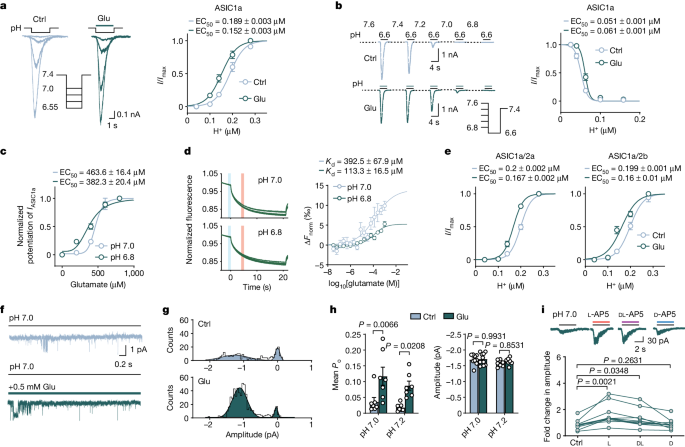Glutamate Acts on Acid-Sensing Ion Channels to Worsen Ischaemic Brain Injury
Introduction
Ischaemic brain injury occurs when the brain is deprived of oxygen and nutrients due to reduced blood flow, often resulting from a stroke or cardiac arrest. Glutamate, an important neurotransmitter in the brain, has been implicated in exacerbating the damage caused by ischaemia. Acid-sensing ion channels (ASICs) are a family of receptors that respond to changes in extracellular pH and play a role in mediating the effects of glutamate during ischaemic brain injury.
Glutamate’s Role in Ischaemic Brain Injury
Glutamate is the most abundant neurotransmitter in the brain and is involved in various physiological processes, including memory, learning, and neuronal communication. During ischaemic conditions, the levels of glutamate in the brain can increase significantly, leading to overactivation of glutamate receptors and calcium influx into neurons. This influx of calcium can trigger a cascade of events that ultimately result in cell death.
Acid-Sensing Ion Channels and Glutamate
ASICs are a family of ion channels that are activated by changes in extracellular pH. Research has shown that ASICs can be activated by acidification of the extracellular environment during ischaemia. Additionally, ASICs have been found to interact with glutamate receptors, leading to increased calcium influx and neuronal damage.
Interaction Between Glutamate and ASICs
Studies have shown that glutamate can directly activate ASICs, leading to an increase in channel activity and calcium influx. This interaction between glutamate and ASICs can exacerbate the damage caused by ischaemia by promoting neuronal excitotoxicity and cell death.
Conclusion
Glutamate acts on acid-sensing ion channels to worsen ischaemic brain injury by promoting neuronal excitotoxicity and cell death. Understanding the mechanisms underlying this interaction between glutamate and ASICs may lead to the development of targeted therapies for the treatment of ischaemic brain injury.
FAQs
1. What are acid-sensing ion channels?
ASICs are a family of ion channels that are activated by changes in extracellular pH. They play a role in mediating the effects of glutamate during ischaemic brain injury.
2. How does glutamate worsen ischaemic brain injury?
Glutamate can lead to overactivation of glutamate receptors, resulting in calcium influx into neurons and ultimately cell death. Additionally, glutamate can directly activate ASICs, leading to increased channel activity and neuronal damage.
3. What are the implications of the interaction between glutamate and ASICs?
The interaction between glutamate and ASICs can exacerbate the damage caused by ischaemia by promoting neuronal excitotoxicity and cell death. This highlights the importance of targeting these pathways for the development of new therapeutic strategies.
4. How can the research on glutamate and ASICs be applied to clinical settings?
Understanding the mechanisms underlying the interaction between glutamate and ASICs may lead to the development of targeted therapies for the treatment of ischaemic brain injury. Future studies may focus on identifying specific inhibitors or modulators of these pathways for clinical use.




